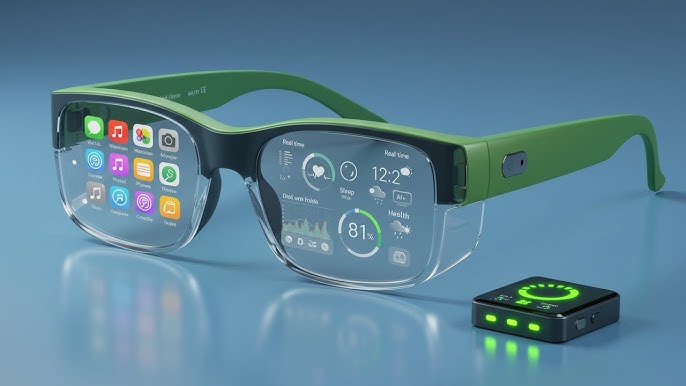
Advances in wearable technology are bringing new hope to people with low vision. In 2025, several AI-enabled smart glasses are being developed or refined to help users with tasks like reading, recognizing faces, and navigating environments. But as exciting as the concept is, practical adoption still faces challenges. This post looks at how these devices work, their real-world usefulness, and what optometrists and patients should consider today.
How AI Glasses for Low Vision Work
These smart glasses typically combine:
Camera + computer vision algorithms — The device captures the environment and processes it in real time.
Augmented visual feedback — It can magnify, highlight contrast, or read text aloud.
Wearable design — Lightweight form factors with audio output or visual overlays.
Some devices integrate eye tracking, depth sensors, or connectivity with smartphone apps to enhance their assistance.
What They Can Do (Current Use Cases)
Magnify text and images, allowing users to read menus, labels, or documents.
Detect and identify faces or objects, announcing them aloud.
Provide contrast enhancement or edge highlighting to improve visual clarity.
Offer navigation cues or obstacle alerts in complex environments.
Limitations & Challenges
Battery life and processing power
Smart glasses require significant energy to run real-time video processing, which limits usage hours.Latency and reliability
Delays or errors in image processing can reduce usefulness or cause frustration.Weight & comfort
Devices must remain lightweight and comfortable for extended wear, which is still difficult with current hardware.Cost & accessibility
High development costs make them expensive and less accessible to many patients.User training & adaptation
Users may need training to interpret audio/visual feedback effectively and integrate use into daily life.Regulatory & interoperability issues
Standards, medical device regulation, and compatibility with vision prescriptions or assistive aids pose obstacles.
What This Means for Eye Care Professionals
Stay informed: Be aware of new models, their capabilities, and limitations.
Set realistic expectations: Explain to patients what these devices can and cannot do currently.
Offer trials or demos where possible: Partner with manufacturers or vision tech companies.
Combine with conventional low vision solutions: Remain the first line for refraction, magnifiers, LED lamps, and orientation & mobility training.
Monitor developments: As hardware, software, AI, and regulatory frameworks improve, these tools will become more viable.
What Patients Should Ask or Consider
How long the device can operate (battery life).
How well it recognizes faces, text, objects under various lighting.
Weight and comfort for wear over time.
Warranty, support, and software updates.
Whether it complements, not replaces, standard low vision aids.
Conclusion
AI glasses for low vision are promising tools on the horizon—and some are already available—but they’re not yet a universal solution. For now, optometrists and vision specialists should view them as complementary enhancements, not replacements, to existing low vision care. As technology evolves, they may become increasingly practical and powerful in everyday life.









